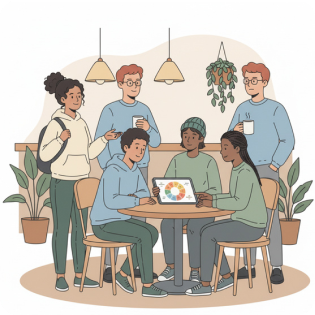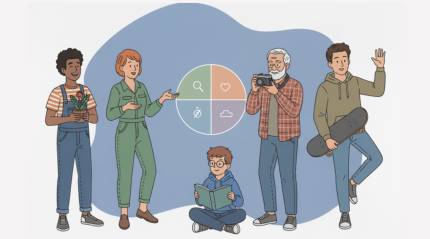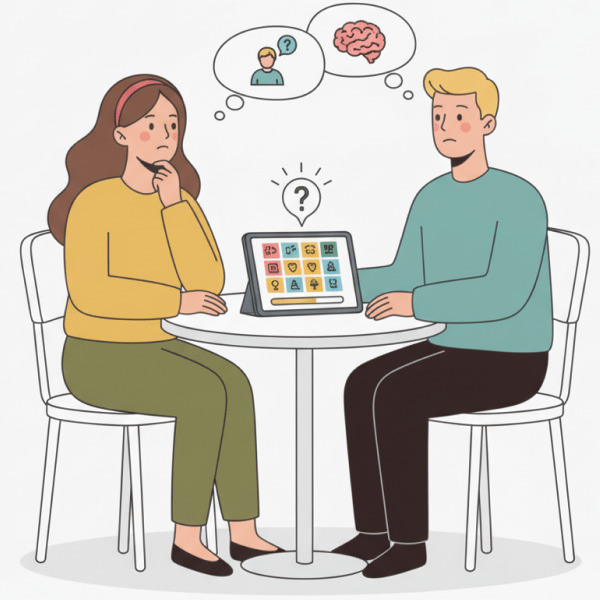The True Value of MBTI 16 Personalities Test
Personality frameworks help people name consistent patterns in preferences, communication, and motivation. These models distill complex human behavior into digestible dimensions that feel both practical and memorable. Built on decades of typological thinking, the modern approach maps how we gain energy, process information, make decisions, and organize life. When used sensibly, it functions as a mirror for habits and a compass for growth. Rather than boxing people in, the goal is to create helpful language for recurring tendencies and likely blind spots.

Across the internet, the widely shared 16 personalities test weaves Jungian theory into an accessible four-letter profile that many readers find intuitive. While it’s not a diagnostic tool, it offers a structured snapshot that can spark valuable self-reflection and constructive dialogue. For many beginners, the approachable 16 personality test offers a structured starting point without heavy jargon, giving newcomers a way to compare patterns without oversimplifying individuality.
Start the Test-
![]() It translates abstract psychology into everyday language.
It translates abstract psychology into everyday language. -
![]() It provides a common vocabulary for teams and families.
It provides a common vocabulary for teams and families. -
![]() It highlights strengths while revealing likely stress triggers.
It highlights strengths while revealing likely stress triggers.
Why the 16 Personality Types Are Built on Four Key Spectrums
The framework groups preferences into four pairs: where attention goes, how information is processed, what guides decisions, and how structure is managed. Each pair represents a spectrum rather than a strict either/or choice. The combination of four letters points to tendencies under stress, typical collaboration patterns, and likely growth edges. While no label captures a whole person, the vocabulary makes it easier to compare styles and anticipate misunderstandings before they escalate.
| Dimension | Focus | Key Question |
|---|---|---|
| Extraversion–Introversion | Energy source | Where do I recharge best? |
| Sensing–Intuition | Information intake | Do I trust facts or patterns first? |
| Thinking–Feeling | Decision lens | Do I weigh logic or values more? |
| Judging–Perceiving | Lifestyle rhythm | Do I prefer planning or adapting? |
Some learners explore entry-level portals that advertise a 16 personalities test free path, but the real impact comes from reflective interpretation and follow-through. Others seek historical context and references that connect modern tools to the myers briggs test 16 personalities, clarifying what the letters mean and what they do not claim to predict. Regardless of the route, depth emerges from journaling, peer feedback, and experiments that translate insights into daily choices. With practice, you’ll spot patterns faster and communicate needs more clearly.

What Test Reveals
For many readers, a streamlined questionnaire marketed as the MBTI test 16 personalities translates complex theory into a simple sequence of choices they can complete in minutes. Beyond the convenience, transparent explanations help users connect the dots between items and real-world behavior. When motivation flags, a playful format akin to a 16 personalities quiz can re-engage curiosity and make learning feel lighter without sacrificing substance or care. Taken thoughtfully, the process becomes a springboard for goals, feedback, and better habits.
Start the TestTurn the 16 Personality Test into Actionable Progress
For personal development enthusiasts, the interpretive lens offered by the personality test 16 personalities can illuminate strengths to double down on and pressure points to support with better systems. Budget-conscious learners often appreciate the convenience promised by a free MBTI test online 16 personalities, especially when it includes clear guidance on next steps and actionable tips. With healthy skepticism and a bias for practice, you can convert descriptive insights into measurable progress. Ultimately, the payoff arrives when insights shift behavior in meaningful, trackable ways.

-
![]() Focus on trends across answers rather than isolated items.
Focus on trends across answers rather than isolated items. -
![]() Use results as hypotheses you can test in daily routines.
Use results as hypotheses you can test in daily routines. -
![]() Revisit insights after major life or career changes.
Revisit insights after major life or career changes.
Practical Test to Identify 16 Personality Types in Teams
Managers often introduce a workshop anchored by a recognized sixteen personality test and then co-create team norms that reflect the group’s blend of styles. For onboarding, a playful exercise similar to a 16 personality types quiz can spark conversation about communication defaults and preferred feedback loops. Beyond icebreakers, the most effective teams translate insights into concrete agreements about collaboration tools, time blocks, and escalation pathways. Over months, these agreements reduce friction and make success replicable.

Common Myths, Caveats, and Ethical Use
Some platforms promote unlimited access with phrases resembling a 16 personalities test full free offer, yet the true value arrives when insights drive practical change rather than endless retakes. When evaluating item quality, practitioners recommend reviewing clarity, neutrality, and coverage similar to how you would appraise 16 personality test questions for bias and relevance. Treat results as living hypotheses that evolve with feedback, and you will avoid the most common pitfalls. Above all, keep curiosity high and rigidity low.

When you want a structured pathway, many people begin with a straightforward 16 personality type test and then layer in deeper learning through articles, books, and workshops. To boost reliability, compare your self-perception with feedback from colleagues and friends who see you in varied contexts. If you’re chasing precision, look for clear methodology notes that justify claims, especially when something is billed as a 16 personalities most accurate test to ensure standards are transparent. Finally, keep a simple log of experiments so you can track what changes actually move the needle.
Start the Test16 Personalities Test Online: Find Your MBTI Type
Get StartedFrequently Asked Questions
- How long does it take to complete a typical assessment?Most quick versions take 10–15 minutes, while more thorough formats can run 25–40 minutes depending on item count and reflection time. Speed isn’t a virtue if accuracy drops, so choose a moment when you can read carefully. Completing the survey in one sitting reduces context shifts that might skew your answers. Afterward, allocate time to digest the report instead of rushing to share results.
- Can my type change over time?Your preferences can appear to shift as roles, skills, and environments evolve, especially when you practice behaviors outside your comfort zone. Major life transitions can temporarily tilt responses in new directions. It’s helpful to revisit the framework annually to compare patterns and keep your self-portrait current. Growth often looks like expanding flexibility rather than abandoning core tendencies.
- Is one provider definitively the best?No single publisher owns every context or use case, and quality varies. Look for transparent methodology, clear definitions, and guidance that links insights to behavior. If you need a broad benchmark, consider options marketed as a 16 personality types test and then vet them by reviewing documentation and user support. The best choice is the one that fits your objective, budget, and depth needs.
- How should I use my results at work?Treat the profile as a conversation starter for team norms, decision rules, and feedback preferences. Translate insights into calendar design and meeting structure so improvements stick. Pair self-knowledge with skill-building in areas like communication, prioritization, and conflict resolution. When teams write down agreements, they reduce misunderstandings and increase reliability.
- What should I do if a description doesn’t fit me?Flag the mismatches and investigate whether context, stress, or learned behavior is influencing your responses. Compare notes with trusted peers who observe you in different situations. If doubts persist, retake the survey later under calmer conditions and review edge cases where your behavior flips. The goal is a useful map, not a perfect mirror.
The Latest News
 The Ultimate Guide to Online MBTI-Style Testing and the Sixteen-Type Test 16 Personalities Test Online: Find Your MBTI Type Get Started Why People Love Typology Tools and How They Work in the Real World Personality frameworks captivate us because they offer language for patterns we’ve always sensed but never quite articulated. In just a few minutes,...
The Ultimate Guide to Online MBTI-Style Testing and the Sixteen-Type Test 16 Personalities Test Online: Find Your MBTI Type Get Started Why People Love Typology Tools and How They Work in the Real World Personality frameworks captivate us because they offer language for patterns we’ve always sensed but never quite articulated. In just a few minutes,... - 18 November, 2025
- MBTI Test 16 Personalities: A Complete, Insightful, and Search-Optimized Guide 16 Personalities Test Online: Find Your MBTI Type Get Started What Is the MBTI and Why Does It Captivate People Personality frameworks can help people put language to patterns they already sense in daily life. Among newcomers, the phrase MBTI test 16 personalities often appears in s...
- 17 November, 2025
- The Complete Guide to the 16 Personalities Test: Insights, Uses, and Smart Next Steps 16 Personalities Test Online: Find Your MBTI Type Get Started Understanding the Typology Behind Modern Personality Quizzes Personality typology offers a practical lens for examining how people gather information, make decisions, and approach work and relationships. Rather than claim...
- 14 November, 2025
Please Note
This website (16personalitiestesthub.com) is not an official representative, creator or developer of this application, or product. All the copyrighted materials belong to their respective owners. All the content on this website is used for educational and informative purposes only.


